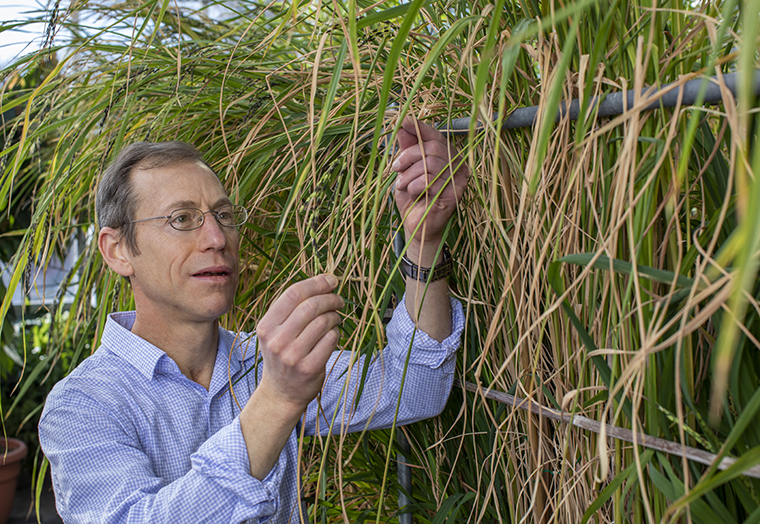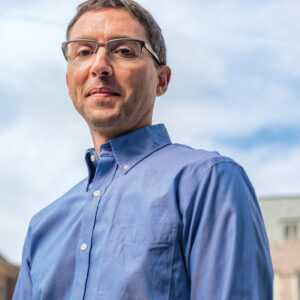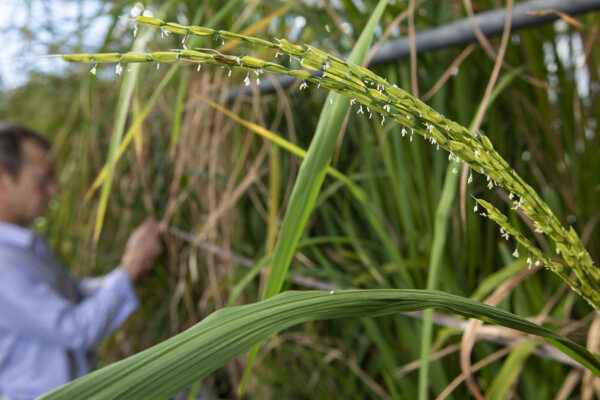Every year, the Source looks back at some of the most-read stories. Many pieces were originally published in the past year. Still, some stories from earlier years continue to attract new readers. Here, check in with the Washington University in St. Louis researchers who made these important discoveries to learn more about their research, how they came to their studies and how the science has progressed since their work was first published.

The story: Linguistic profiling: The sound of your voice may determine if you get that apartment or not (Feb. 2, 2006)
The study: John Baugh, the Margaret Bush Wilson Professor in Arts & Sciences, found that people who “sounded” Black or Mexican on the phone were often denied housing and employment opportunities. For two years, Baugh’s team responded by phone to hundreds of housing and job ads using three different dialects — Black, Mexican and standard English. Those who spoke with the Black and Mexican dialects were more likely to get no response or to be told the opportunity was no longer available than those who used standard English. Such discrimination surprised no one, least of all Baugh, who originated the term linguistic profiling.
“An important point is callers all used the same exact words. The intonation alone was enough for the person to decide, ‘I’m not renting to Black people,’” Baugh said.
The impact: Since 2006, Baugh’s pioneering work has been replicated in different contexts and countries. Recently, researchers found that callers with Black dialects were less likely to be accepted as new patients by pediatricians. In Germany, researchers showed that job applicants who spoke with a Turkish accent were less likely to receive a response from employers.
“This research resonates worldwide because so many people can relate,” Baugh said. “First-generation Swedes in Minnesota experienced linguistic profiling, not necessarily racial profiling. People made fun of the way the Italians talked and said terrible things about the Jews because of their Yiddish accents. And then there are the stereotypes about sexual orientation and speech.”
What’s next for linguists: As linguists develop new tools for artificial intelligence (AI) to master human language, they must also stand guard against AI’s dangers, Baugh said. Take, for instance, virtual kidnappings where criminals use AI to sample a young person’s voice to create a convincing ransom plea. Or political operatives who create deep-fake audio messages designed to sway voters or sow dissent.
“There have always been bad actors but, in the past, you could detect it because Boris in Moscow would make some critical grammatical mistake in his attempt to sound like someone from Des Moines,” said Baugh, who recently completed his term as president of the Linguistic Society of America. “But as the technology gets better and better, it’s hard to know if the voice you hear is actually that person. Those among us who care about the welfare and well-being of our fellow human beings need to be on the lookout for the weaponization of AI — because that’s coming next.”
The story: Suicidal thoughts in 9- and 10-year-olds correlate to family dynamics, study found (Feb. 7, 2020)
The study: Deanna Barch, the Gregory B. Couch Professor of Psychiatry at the School of Medicine, and a team of researchers found a nontrivial rate of children as young as 9 and 10 years old have thoughts of suicide. (Barch is also a professor of psychological and brain sciences and vice dean of research in Arts & Sciences.) She also found that family conflict and parental monitoring are significant predictors of suicidal thoughts, and that the majority of children surveyed had caregivers who either didn’t know or report those suicidal thoughts. The study looked at 11,814 9- and 10-year-olds from the Adolescent Brain Cognitive Development (ABCD) study and grew out of Barch’s earlier research that showed suicidal ideation among young children predicted such thoughts among adolescents.
Common misconceptions about children and suicide: Despite mounting evidence, many believe that young children can’t possibly understand the concepts of death and suicide.

“If you go back to older eras, there was this assumption that kids can’t have these mental experiences,” Barch said. “If you’re a parent of a child who hasn’t had mental health problems, it’s very difficult to imagine your child saying, ‘I want to kill myself’ and really mean it. I had an email from a grandparent who told me about her young school-aged granddaughter who was repeatedly trying to kill herself. And she was like, ‘I just didn’t think this was possible.’”
New research: Barch, in collaboration Joan Luby, MD, the Samuel and Mae S. Ludwig Professor of Child Psychiatry at the School of Medicine, have completed two new studies that advance our understanding of young children and suicide. In one study, which will publish soon, Barch identifies excessive feelings of guilt as a key differentiator between children who have suicidal ideation and those who act on such thoughts. The second study looked at behaviors such as emotional suppression and feelings of burdensomeness that predicted suicidal ideation.
“Now that we have this important clue about guilt, which hadn’t been identified before, we have started to focus specifically on interventions around burdensomeness and connection that might be critical to think about for children with suicidal ideation,” Barch said. “The thinking has been that all children with ideation should be hospitalized, but there is evidence that too much intervention can backfire. The challenge now is figuring out how to predict who is going to act versus who are those children who have passive ideation, because those treatments need to be very different.”
The story: Deep history of coconuts decoded ( June 24, 2011)

The study: Kenneth Olsen, the George William and Irene Koechig Freiberg Professor of Biology in Arts & Sciences, is a leading expert on the evolution of rice and its nemesis, weedy rice, which is killing crops. But his work on a different species — coconuts — draws readers year after year. Through his study of preserved coconut DNA and present-day samples, Olsen determined there are two clearly differentiated populations of coconuts, one that was first cultivated in the Pacific and another that was cultivated in the Indian Ocean basin. (Another story featuring Olsen, “Beware the smell of bitter almonds,” also ranks among the Source’s most-read stories. In this 2010 article, Olsen explained why many food plants such as apples, apricots, flaxseed and, yes, almonds, contain cyanogenic glycosides that release cyanide when eaten. Thanks to modern food processing techniques and strict regulations, cyanide-wielding plants pose little threat to the American food supply.)
DNA and economic history: Olsen’s study not only revealed the history of coconut cultivation, it also shed light on the history of trade, migration and colonization. A DNA analysis of 13,000 coconuts traced prehistoric trade routes from India to West Africa, Persia to East Africa and Southeast Asia to Madagascar.
“One of our key insights was that ancient Austronesians took a particular form of coconut that was grown in Southeast Asia and brought it with them when they settled in Madagascar,” Olsen said. “So when you look at the people from the highlands of Madagascar, they are descended, in part, from ancient Asians who also brought rice and pigs and their language there. The insights have held up.”
The genomics revolution: The study was Olsen’s first and last on coconuts. He said advances in genomics have led to important new discoveries about this vital crop.
“At the time, coconut was such a non-model species,” Olsen said. “Back then, we didn’t have the ability to ask detailed questions about the connection between genes and traits or how the genome has been affected by humans. It was just this bizarre thing. Now there are really high-quality genome sequences, which have opened a world of possibilities for biological research, whether it’s the study of domestication or pathogens or what we call the genotype-phenotype connection. That’s one of the things that makes biology, and evolutionary biology in particular, so exciting — how quick the advances have been.”
The story: The divide between us: Urban-rural political differences rooted in geography (Feb. 18, 2020)
The study: Andrew Reeves, a professor of political science in Arts & Sciences and director of the Weidenbaum Center on the Economy, Government, and Public Policy, and James Gimpel, of the University of Maryland, found evidence that the well-recognized urban-rural divide in politics is rooted in geography.
Prior to their paper, the consensus was that the divide’s origins were based in the personal characteristics of those who live in rural or urban communities. But Reeves and Gimpel’s research showed that how close people live to a major metropolitan area and their town’s population density play a significant role in shaping political beliefs and partisan affiliation. Their analysis found that, on average, Republicans lived 20 miles from a city, while independents lived 17 miles away and Democrats lived 12 miles away.
The initial reaction: Reeves rarely gets emails from the public, but he received plenty after the Source published his findings.

“I had emails from people telling me that I don’t understand what it is to live in rural places and emails from people telling me that I didn’t know what it meant to live in cities,” Reeves said. “The funny thing is I grew up on a farm in rural Maryland, and I’ve lived in cities now for a while. But I had the opportunity to engage folks in meaningful conversations.”
“This article has been widely cited, including by a lot of scholars outside of political science. I think this reflects the fact that the urban-rural divide affects a lot more than our politics.”
From mentor to collaborator: The paper was a result of many conversations Reeves had with his former undergraduate mentor, Gimpel. Today, Reeves and Gimpel have moved beyond defining the urban-rural divide to exploring its possible explanations.
“People living in rural areas tend to be more attached to their communities, and those feelings of contentment are connected to politically conservative viewpoints,” Reeves said. “On the flip side, the more dissatisfied a person is with the place they live, the more attractive they find the policy goals and agenda of liberal progressivism.”
In another project, currently underway, they’re looking at how decisions people make about where to live contribute to the urban-rural divide.
The story: Older Neandertal survived with a little help from his friends (Oct. 23, 2017)
The analysis: Erik Trinkaus, a professor emeritus of physical anthropology in Arts & Sciences, found that a deaf and partially paralyzed Neandertal who lived some 50,000 years ago must have relied on the help of others to survive to a relatively old age. The study was part of Trinkaus’ larger body of work suggesting that Neandertals and early modern humans were more alike socially and biologically than previously assumed.

The history: As a young PhD graduate, Trinkaus sheepishly asked famed anthropologist T. Dale Stewart if he could join his team researching Neandertal remains found in Shanidar Cave in Iraq. To his surprise, Stewart told Trinkaus that he could take over the project.
“With his support, I arranged with the Iraqis to spend time in the antiquities museum in Baghdad and worked on the fossils,” recalled Trinkaus, who now lives in Vermont. “A lot of work had been done, but there was much to do piecing bones back together to enable us to say things about their biology.”
Trinkaus’ evolving view of Neandertals: As a young researcher, Trinkaus wanted to understand what gave modern humans the evolutionary edge over Neandertals. But with each study — and he published dozens — he came to understand that Neandertals and early modern humans were alike in key ways.
“I’ve been proving myself wrong for decades,” Trinkaus said. “Neandertals and early modern humans are making the same kinds of stone tools. They’re hunting similar-sized animals in similar ways. They’re using different things for body decoration. We’ve found evidence of piercing shells and putting pigment on them and using them as body decoration. There is also evidence that Neandertals buried their dead. The idea that these Neanderthals were these dumb brutes, that they were just barely surviving, started to bother me.”
The story: New research finds 1M deaths in 2017 attributable to fossil fuel combustion (June 14, 2021)
The study: An international team of researchers, including Randall Martin, the Raymond R. Tucker Distinguished Professor at the McKelvey School of Engineering, determined what sources contribute to pollution and the health effects they have on global, regional and smaller scales. They found that worldwide, more than 1 million deaths were attributable to the burning of fossil fuels in 2017. More than half of those deaths were attributable to coal.

“I would say that the result was not surprising. We knew that a large fraction of PM2.5 (microscopic particles that infiltrate the lungs, causing a range of serious health problems) is associated with fossil fuel combustion, but we didn’t know what the specific fraction was. This project provided a way to quantify the role of fossil fuel combustion in contributing to those deaths,” Martin said.
The impact: It’s easy to read today’s climate headlines and despair. But it’s important to recognize successes, too, Martin said. For instance, in a recently published study, Martin’s group identified a global reversal in fine particulate pollution.
“During the first decade of the millennium, PM2.5 was increasing in most countries around the world. But in the last decade, there has been a decline. A large part of that reversal is driven by a major effort in China to reduce PM2.5. That’s a real success story. There have been sustained reductions in North America and Europe as well. That progress is tracked by the PM2.5 estimates we provide every year.”
A global network: Martin and his global network have been studying air pollution for nearly two decades.
“We work with scientists at NASA who are developing algorithms to interpret satellite observations, hundreds of research groups that contribute to the GEOS-Chem model (an open-source model Washington University maintains to model global atmospheric chemistry), and colleagues in 30 cities around the globe that collect particles in filters and send those filters back to WashU for us to analyze,” Martin said. “More broadly, we work with a community that examines the health effects of PM2.5. Having collaborators in a variety of different jurisdictions all working together to better understand air quality and find solutions has been fundamental to our success and incredibly rewarding.”
— Senior News Director Sara Savat contributed to this article.


